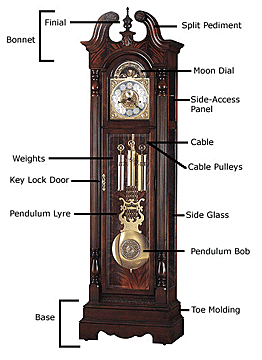Each base quantity is considered a dimension denoted by a specific symbol written within square brackets. It stands for the qualitative nature of the physical quantity. For example, different quantities such as length. Breadth, diameter, light year which are measured in metre denote the same dimension and has the dimension of length [ L ].
Similarly the mass and time dimensions are denoted by [ M ] and [ T ], respectively. Other quantities that we measure have dimension which are combinations of these dimensions. For example, speed is measured in metres per second. This will obviously have the dimensions of length divided by time. Hence we can write.

Similarly the dimensions of acceleration are

Using the method of dimensions called the dimensional analysis, we can check the correctness of a given formula or an equation and can also derive it. Dimensional analysis makes use of the fact that expression of the dimensions can be manipulated as algebraic quantities.
Checking the homogeneity of physical equation
In order to check the correctness of an equation, we are to show that the dimensions of the quantities on both sides of the equation are the same, irrespective of the form of the formula. This is called the principle of homogeneity of dimensions.
Example 1.4: check the correctness of the relation ![]() where v is the speed of transverse wave on a stretched string of tension F, length l and mass m.
where v is the speed of transverse wave on a stretched string of tension F, length l and mass m.
Solution : Dimensions of L.H.S. of the equation = ![]() Dimensions of R.H.S. of the equation =
Dimensions of R.H.S. of the equation = ![]()
![]() Since the dimensions of both sides of the equation are the same, equation is dimensionally correct.
Since the dimensions of both sides of the equation are the same, equation is dimensionally correct.
Deriving a possible formula
The success of this method for deriving a relation for a physical quantity depends on the correct guessing of various factors on which the physical quantity depends.
Example 1.5: Derive a relation for the time period of a simple pendulum (Fig. 1.2) using dimensional analysis. The various possible factors on which the time period T may depend are:
i) Length of the pendulum (l)
ii) Mass of the bob (m)
iii) Angle ![]() which the thread makes with the verticaliv)
which the thread makes with the verticaliv)
Acceleration due to gravity (g)
 Fig. 1.2
Fig. 1.2
Solution: The relation for the time period T will be of the form

Where we have to find the values of powers a, b, c and d
Writing the dimensions of both sides we get
Comparing the dimensions on both sides we have
 Equating powers on both the sides we get
Equating powers on both the sides we get
 substituting the values of a, b,
substituting the values of a, b, ![]() and d in Eq. 1.1
and d in Eq. 1.1
 The numerical value of the constant cannot be determined by dimensional analysis, however, it can be found by experiments.
The numerical value of the constant cannot be determined by dimensional analysis, however, it can be found by experiments.
Example 1.6: find the dimensions and hence, the SI units of coefficient of viscosity ![]() in the relation of stokes’ law for the drag force F for a spherical object of radius r moving with velocity v given as
in the relation of stokes’ law for the drag force F for a spherical object of radius r moving with velocity v given as![]()
Solution: 6 π is a number having no dimensions. It is not accounted in dimensional analysis. Then

Substituting the dimensions of F, r, and v in R.H.S.

Thus, the SI unit of coefficient of viscosity is kg![]()
Do You Know?

Physical Quantities
